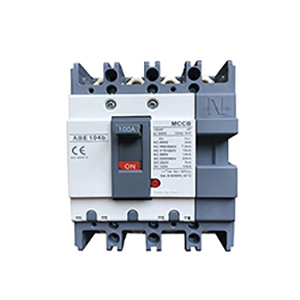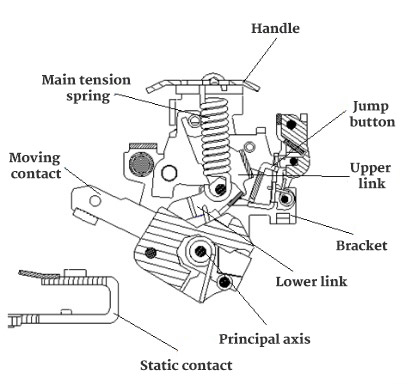What is a Molded Case Circuit Breaker?
A molded case circuit breaker, also known as an installation circuit breaker, is an electrical protection device used to protect a circuit from overcurrent, which can cause an overload or short circuit. All parts are sealed in plastic housing, auxiliary contacts, undervoltage releases and shunt releases are mostly modular. Due to its very compact structure, molded case circuit breakers are basically impossible to repair. Most of them use manual operation, and large-capacity can choose electric switching. Due to the application of electronic overcurrent release, molded case circuit breakers can also be divided into two types: class A and class B. Class B has good three-stage protection characteristics, but due to price factors, the use of thermal magnetic release Class A products have a higher market share.
Molded case circuit breaker is to install contacts, arc extinguishing chamber, release and operating mechanism in a plastic shell. Generally, maintenance is not considered. It is suitable for the protection switch of branch circuit. The overcurrent release has thermal magnetic There are two types of thermal-magnetic molded case circuit breakers, the general thermal-magnetic molded case circuit breaker, which is a non-selective circuit breaker, with only two protection modes: overload long-time delay and short-circuit instantaneous protection. Electronic molded case circuit breakers have overload long-time delay and short-circuit short-circuit protection Four protection functions of time delay, instantaneous short circuit and ground fault. Some new products of electronic molded case circuit breakers also have a regional selective interlock function. Most molded case circuit breakers are manually operated, and some have motor operating mechanisms.
Working principle of MCCB
The main contacts of low-voltage circuit breakers are manually or electrically operated. After the main contacts are closed, the free trip mechanism locks the main contacts in the closed position. The coil of the overcurrent release and the thermal element of the thermal release are connected in series with the main circuit, and the coil of the undervoltage release is connected in parallel with the power supply.

When the circuit is short-circuited or severely overloaded, the armature of the overcurrent release is closed, so that the free release mechanism operates, and the main contact disconnects the main circuit.
When the circuit is overloaded, the thermal element of the thermal release is heated, causing the bimetal to bend, pushing the free release mechanism to act, and the main contact disconnects the main circuit.
When the circuit is under-voltage, the armature of the under-voltage release is tripped, which also makes the free trip mechanism act, and the main contact disconnects the main circuit.
When the button of the shunt release is pressed, the armature of the shunt release is closed, the free release mechanism is activated, and the main contact disconnects the main circuit.
Features of MCCB
1. Rated ultimate short-circuit breaking capacity ICU
There are two kinds of breaking capacity indicators of circuit breakers: rated ultimate short-circuit breaking capacity ICU and rated working short-circuit breaking capacity IC. As a characteristic parameter, ICs not only consider the breaking capacity of the circuit breaker, but also serve as a breaking index, which can ensure the normal operation of the circuit breaker within the specified number of breaking short-circuit faults.
2. Current limiting breaking capacity
When the circuit breaker is short-circuited and the contacts open rapidly, an arc will occur, which is equivalent to a rapid increase in the arc resistance in series in the line, thus limiting the increase in fault current. The shorter the breaking time of the circuit breaker and the closer the IC is to the ICU, the better the current limiting effect. It can greatly reduce the adverse effects of the electromagnetic effect, electrical effect and thermal effect caused by the short-circuit current on the circuit breaker and electrical equipment, and prolong the service life of the circuit breaker.
3. Short circuit protection
Short-circuit protection is short-circuit instantaneous tripping. Pay attention to adjust the protection setting value in time after the load changes to prevent the setting value from being too small and frequently tripping and affecting the power supply quality. Or the setting value is too high and cannot effectively protect the line and equipment.
4. Overload delay protection
Overload delay protection means that the load current exceeds the limit range of the equipment and there is a danger of burning the equipment. The protection device can cut off the power supply within a certain period of time. Overload has a process of heat accumulation, and the protection action does not need to be too fast. For short-time overcurrent, the protection does not act.
5. Isolation function
The isolation function is to require that the leakage current after the breaker is disconnected will not cause harm to people and equipment. After several short-circuit trips, the switching performance degrades and the leakage current increases. For the human body, a leakage current of less than 30mA is a safe leakage current, while in a harsh environment, a leakage current of more than 300mA for more than 2 hours may cause insulation damage and lead to short-circuit and fire.

